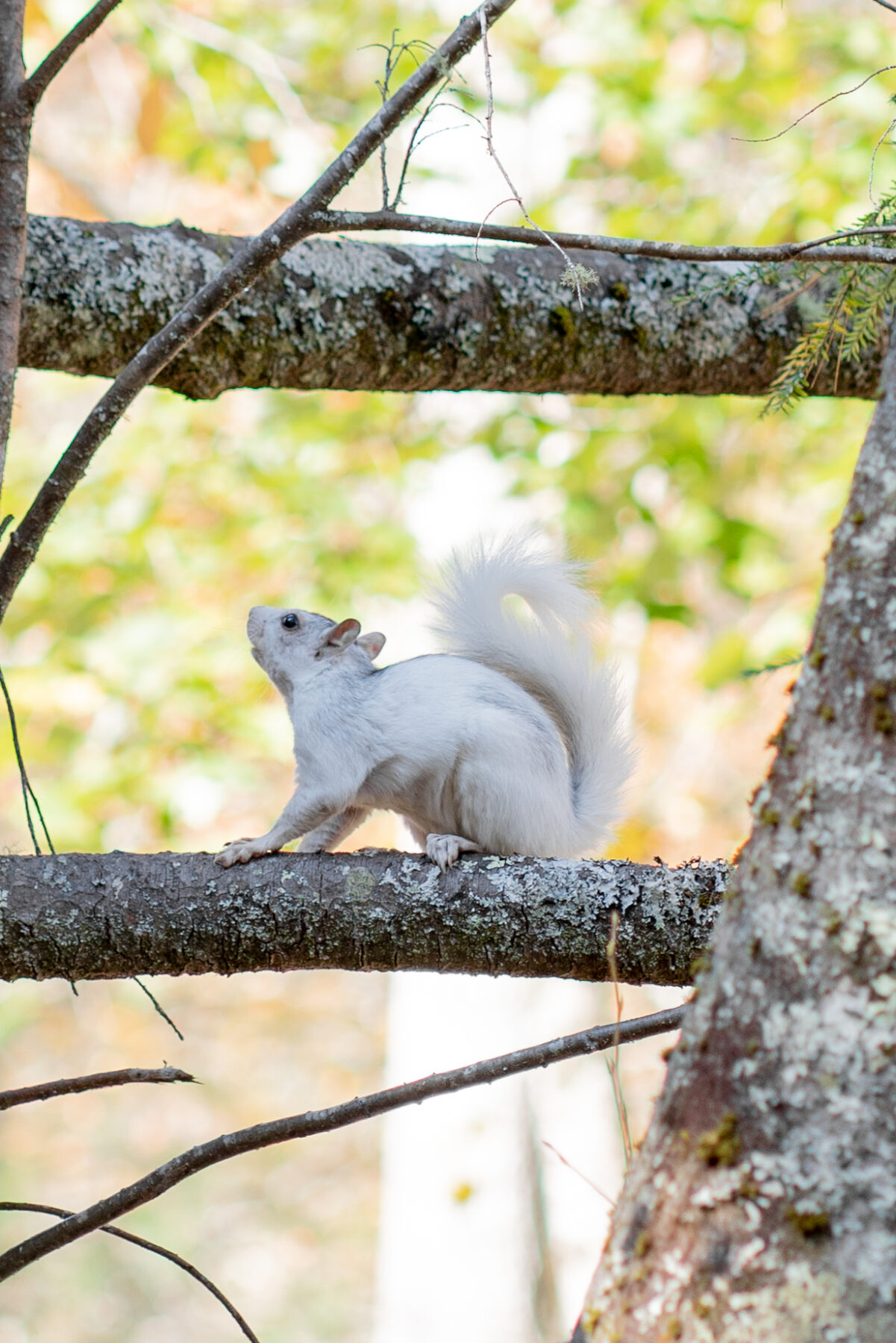The Blue Ridge Mountains in Western North Carolina are home to a rich and diverse array of wildlife. From majestic eagles and black bears, to the playful otter and red fox, the Blue Ridge Mountains offer a unique and beautiful habitat for a variety of species. At The Outdoor Academy, we are so grateful to be able to call this space our classroom. We find that the variety of species, small and large, truly help us emphasize just how special this area is to us, and those who have learned here before us. Let’s learn a little more about some of the awesome species we share this home with.
Black bears are another species of wildlife which are commonly found in the Blue Ridge Mountains. Black bears are typically solitary animals that spend most of their time foraging for food in the forests and mountains of the region. They have a wide-ranging diet and can be seen feeding on berries, nuts, roots, and insects. During the autumn months, black bears are often seen in search of acorns and other nuts that are abundant in the area.
Blue ghost fireflies, one of the flashiest species of the Blue Ridge, are truly a sight to behold. These amazing insects possess a unique blue-green luminescent glow that is quite different from the typical yellowish-green hue of most fireflies. Only found deep in Pisgah Forest, the blue ghost firefly is an important part of the night sky, adding a fun and captivating element to the darkness.
The hellbender salamander can reach lengths of up to 29 inches and is the third-largest salamander species in the world. It is a fully aquatic species and can be found in clean rivers and streams and is an iconic part of the Blue Ridge Mountain ecosystem. The hellbender salamander helps to keep the water clean by consuming insects, small fish, and other animals. Unfortunately, this species is threatened by pollution, siltation, and habitat destruction, which has caused its population to decrease in recent years. To help protect the hellbender salamander, it is important to keep its habitat clean and healthy, as well as to be mindful of the impact of human activities on the environment.
The playful river otter can also be found in the Blue Ridge Mountains. Otters can often be seen playing in the water in groups. River otters are omnivorous and feed on fish, insects, and amphibians. They are also known for their vocalizations and can often be heard producing loud chirps and whistles.
The red fox is another species which is commonly found in the Blue Ridge Mountains. Red foxes are typically solitary animals and can be seen hunting in the forests and meadows of the area. They feed on a variety of small mammals, such as mice, voles, and rabbits, as well as insects, fruits, and berries. Red foxes can be heard making barks, yips, and screams.
The bald eagle is one of the most exciting species of the Blue Ridge Mountains, with nesting sites in the area and frequent sightings of these majestic birds. The bald eagle population in the Blue Ridge Mountains has been gradually increasing since the 1970s, when the species was listed as an endangered species. The abundance of lakes, rivers, and streams in the area provide an ideal habitat for the bald eagle, and it has become a common site along many of the mountain ranges.
A unique species found in the Blue Ridge, and especially Brevard, NC, are white squirrels! These white squirrels are a special subset of the eastern gray squirrels that are indigenous to the area. The white squirrels can be found all around the town center and are a popular tourist attraction. As the legend goes, these squirrels came from a carnival truck and escaped in the early 1900’s. Since then they have made Brevard and the surrounding area their home.
The presence of these animals is a reminder of the importance of protecting our environment, for without healthy ecosystems, these fascinating creatures could disappear. This is a huge part of the ethos of The Outdoor Academy. Our hope is that by instilling a love of nature in all of our students, that love will be passed on to every organism within their ecosystems.
